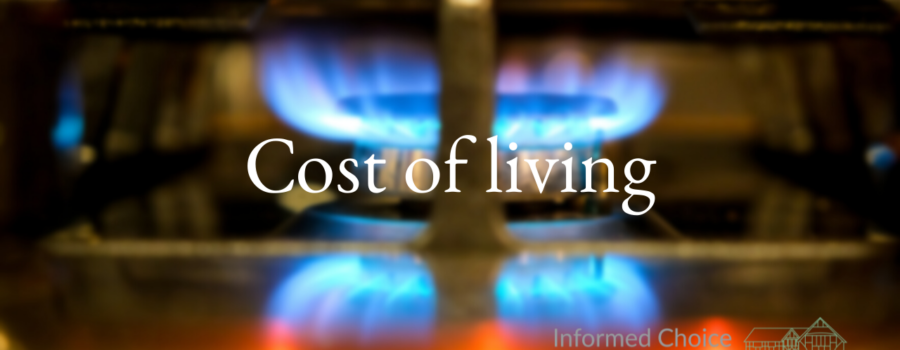We know our clients are thinking a lot about the rising cost of living right now.
Price inflation continues to surge, reaching its highest rate in almost thirty years.
This week’s latest official figures show the Consumer Prices Index (CPI) measure of price inflation rising to 5.4% in the 12 months to December, up from 5.1% a month earlier.
Prices are being driven higher by rising food and energy costs.
The last time CPI price inflation was higher than 5.4% was in March 1992, when it reached 7.1%.
Another commonly used measure of price inflation, the Retail Price Index (RPI), reached 7.5%.
Price inflation could continue to rise over the coming months, with the energy price cap being reviewed next month and higher domestic energy prices implemented on 1st April.
My personal experience sees our fixed tariff ending this month on energy costs. That’s going to sting.
With massively higher wholesale energy prices, the renewal quotes from our energy supplier go from £186 to £435 a month, 133.8% higher assuming we opt for another fixed tariff.
The flexible tariff, subject to the energy price cap, is slightly more affordable, at £232 a month or 24.7% higher.
Of course, while cheaper initially, this option risks becoming a lot more expensive within the next twelve months.
Energy regulator OFGEM will be reviewing the price cap next month, implementing what is expected to be a near 50% increase on 1st April.
The following energy price cap review comes six months after that.
There is speculation that the Chancellor will announce a £500 cost of living payment to families or even scrap VAT on household energy bills. Still, there is no confirmation from the government or details about eligibility criteria.
Also contributing to higher prices are furniture and clothing costs, increasing in the year to December.
Commenting on the latest price inflation figures, Chancellor Rishi Sunak said:
“I understand the pressures people are facing with the cost of living, and we will continue to listen to people’s concerns as we have done throughout the pandemic.”
Price inflation is driven mainly by a higher cost of goods (6.9%) rather than services (3.1%).
A fall in output price inflation for goods in December, while a volatile measure, offered some hope that inflationary pressures could start to ease for some goods.
Jack Leslie, Senior Economist at the Resolution Foundation, said:
“Rising inflation means that Britain’s cost of living squeeze will continue to get tighter over the coming months, particularly when energy bills jump in April.
“The drivers of inflation are becoming more broad-based, though still goods-focused, and will therefore affect everyone across society. Output price inflation – a leading indicator of wider inflation – eased in December. This may be a blip, but it could indicate an easing of price pressures.
“Periods of sustained inflation over five per cent will be a new experience for a new millennials and Generation Z, and a throwback to older generations who remember the 1980s. However, the impact of high inflation in terms of shrinking pay packets is becoming wearily familiar to younger workers, who have already experienced three sustained periods of falling real wages in their short careers.”
With all of this taking place, what steps can you take to tackle the rising cost of living?
There is no magic bullet, with inevitable higher costs for fuel, food and taxation.
But getting a good handle on budgeting, spending with intention, and keeping an eye on the long-view of your Financial Plan will get you through this hopefully still transitory bout of price inflation.

